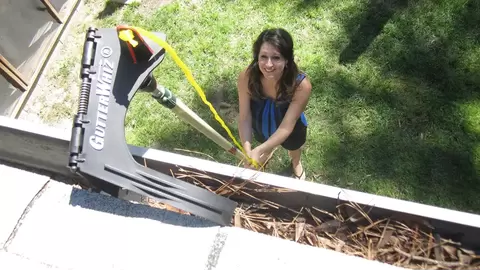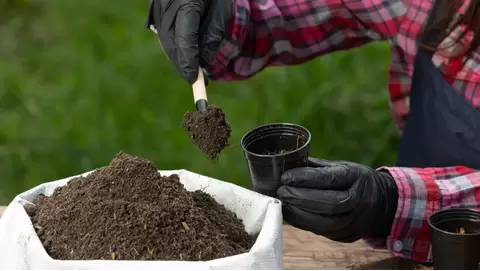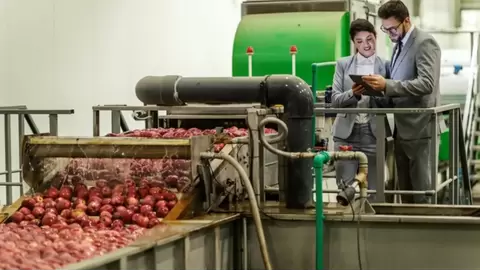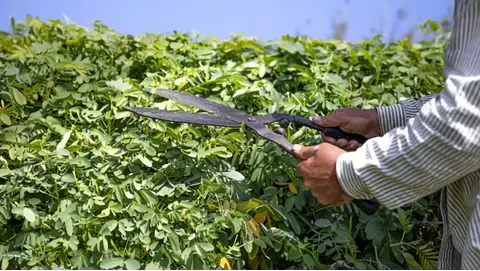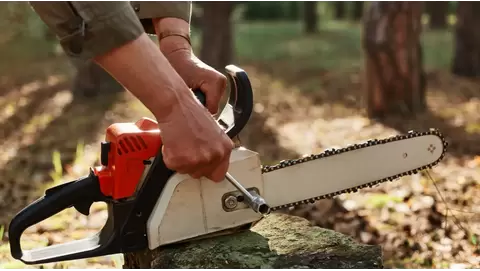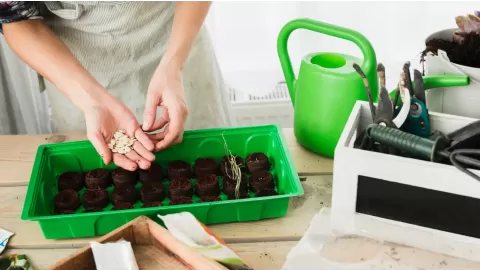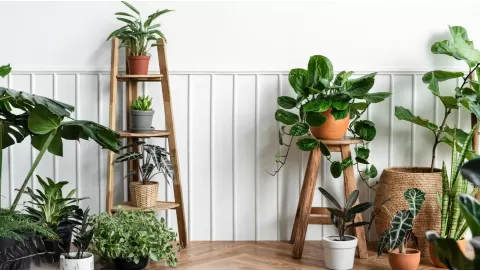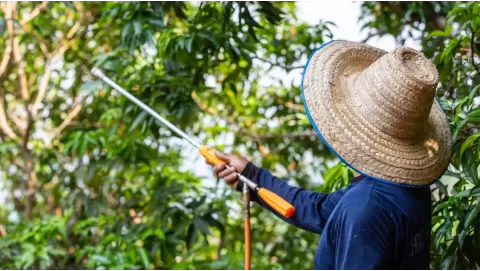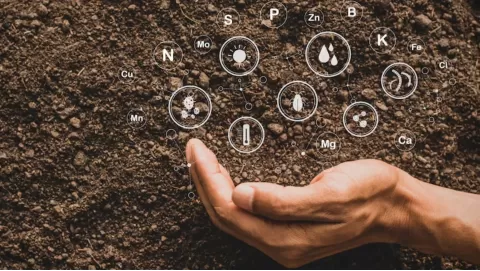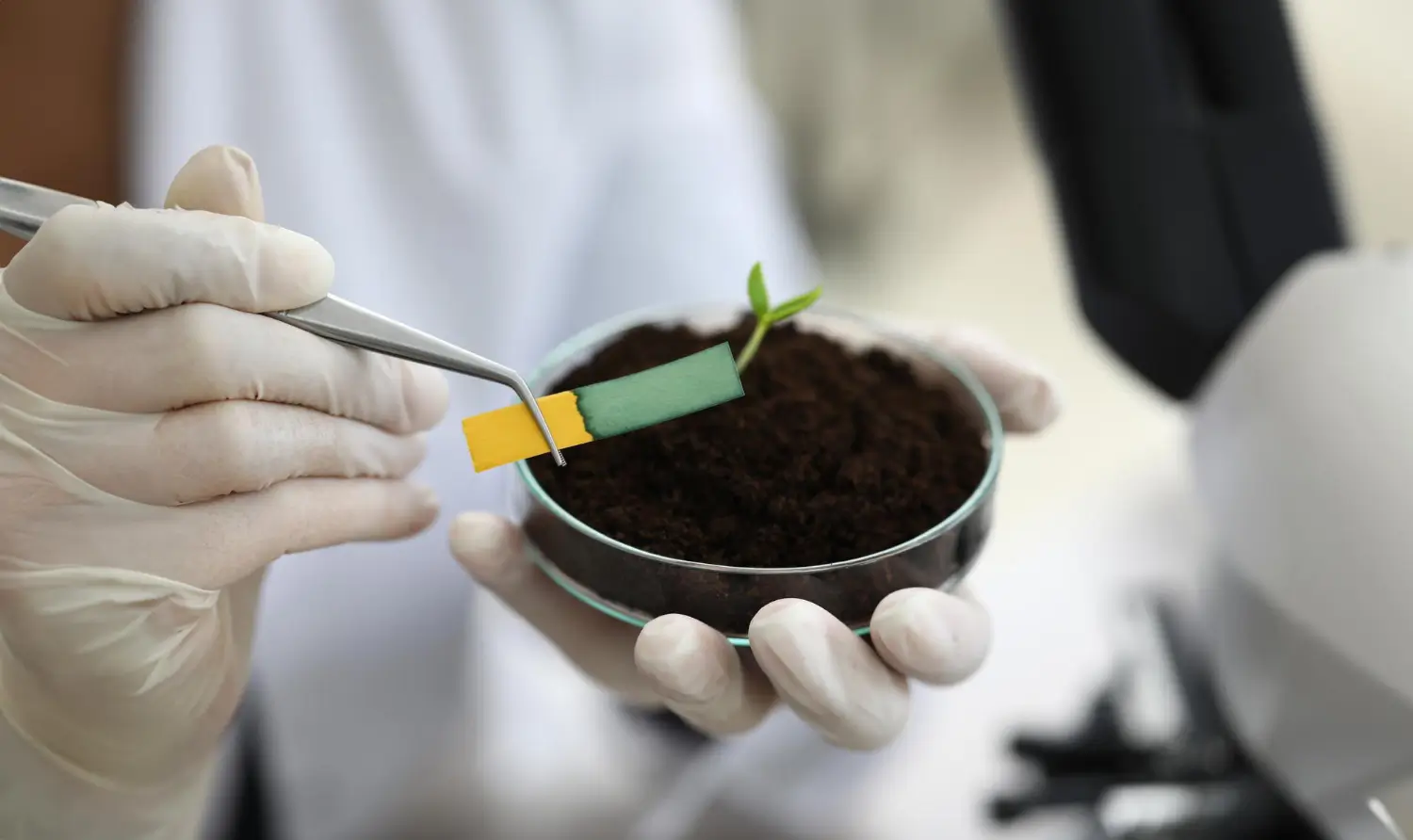
A step-by-step guide to testing soil pH for optimal plant growth
Strong garden starts with healthy soil. It’s a reservoir for nutrients and water that keeps plant roots healthy and growing, and home to a vibrant community of microorganisms. Soil pH is very important because it affects the availability of nutrients that plants need to grow. The right pH allows plants to absorb nutrients more easily, which leads to stronger growth and more vibrant flowers. The nutrients your plants can absorb decrease if the soil is too acid or too alkaline, yours might grow more slowly and look a little less healthy.
By routinely monitoring and tweaking the pH, you can optimize the perfect growing environment. The pH of the soil directly influences which nutrients can be dissolved in solution and are available for uptake by plants and which become bound in the soil and unavailable for uptake. The essential elements, nitrogen, phosphorus, and potassium are available only at certain pH ranges, usually ranging from 6.0 to 7.5. And if the soil is too acidic or too alkaline, even the best fertilisation efforts won’t make these nutrients accessible.
Testing soil pH on a regular basis lets gardeners adjust imbalances before plants suffer from nutrient deficiencies. This leaves little room for deficiency and encourages strong growth, reaching flowering and fruiting optimally. In addition, monitoring pH promotes optimal habitats for good soil organisms that also work to cycle nutrients and improve soil structure, which will strengthen a healthy garden ecosystem.
Growcycle offers high-quality pH meters to measure soil pH with precision. These tools are basic yet accurate and therefore simple to use for soil work. They are designed for fast and accurate readings and find and fix pH problems easily.
Built to last, these meters are suitable for all weather environments, providing longevity in use and value. Growcycle’s pH meters offer easy soil testing and optimizing plant productivity with health.
Reasons to Check Soil pH for Gardening
Gardening success depends on many things, and one of the most important but often forgotten is soil pH.
Awareness and control of the soil’s pH can be the difference between thriving plants and a withering garden. Here are some important reasons why growers should be testing the soil pH to ensure the garden performs at its best.
- Ensures Nutrient Availability
PH in the soil is important because it affects the availability of essential nutrients. When the pH is within its proper range, nutrients, such as nitrogen, phosphorus, and potassium, are dissolved so that plants can take them up. This will guarantee plants receive the right nutrients important for good growth and development.
- Prevents Nutrient Deficiencies
Tending to soil pH and adjusting it can help escape nutrient problems, frequently manifest as yellow leaves, slow growth, or wimpy or pale flowers and fruits. Balancing the pH keeps plants getting a consistent level of nutrients.
- Supports Beneficial Microorganisms
The right soil pH makes a nice place for beneficial microbes. It is important to care for these little guys because they help recycle the nutrients and decompose organic matter, both of which improve the structure and fertility of the soil. Maintaining an optimal soil pH allows these microorganisms to work their best, resulting in a healthier soil environment.
- Optimizes Fertilizer Use
The correct soil pH tells gardeners what fertilizers would be best to use. Fertilizer can also be a waste of nutrients if applied incorrectly. pH testing enables the matching of fertilizers to soils, which increases nutrient uptake and limits environmental damage.
- Enhances Plant Resilience
And where the appropriate pH exists in soil, plants fend off pests, diseases, and environmental stress more readily. The proper pH balance can aid in growing robust plants that are better equipped to fend off threats. Plants will be healthier, and the garden will be bountiful and lovely.
When to Test Soil pH?
The time of testing the pH of the soil is very important. The most accurate results come from testing the soil in spring before planting begins and also in the fall, after the harvest is over. Spring testing enables any necessary amendments before plants start to grow, so they get off to a good start for the season.
By testing the soil in the fall, you get a snapshot of how it has changed during the growing season. This step serves to prepare the soil for the winter and to make any adjustments necessary for the next year.
Gardeners can also evaluate the soil when the plants start doing strange things, such as not growing well, or having yellow leaves ,in the case of smart gardeners. These signals can indicate that the pH of your soil is out of whack and not releasing some of the nutrients that your plants need to grow. This knowledge can help us set the soil right for the future and for healthier, more vibrant plants in the garden.
Benefits of Testing Soil pH
Testing your soil pH has multiple benefits and is necessary for a good gardening experience. One of the main advantages is the precision application of supplements to the soil. Awareness of the existing pH of the soil allows you to add appropriate substances — lime to increase pH or sulfur to decrease it — and thereby adjust the soil to the desired level. This fine control also prevents overcompensation, which may disrupt nutrient availability.
Another benefit is efficient soil management. As gardeners know what the soil needs, they can ensure they apply only the appropriate amount of fertilizers and amendments, thus preventing waste and saving money. This also contributes to environmental health by reducing runoff and chemicals flowing into local water supplies.
Soil health over time is improved by regular testing, reduces long-term costs, and enables sustainable garden practices. Regular surveillance is helping them to keep a healthy ecosystem in their garden and avoid the overuse of chemicals. This contribution to biodiversity also has positive effects on cultivated and wild plant species in the surrounding areas.
Getting the soil pH correct is magical for plant health and growth. When pH is “right,” plants are able to absorb necessary nutrients, producing lush and healthy foliage, abundant fruits, and vibrant blooms. Regular testing and adjustment of pH is a small effort with big dividends that will result in a garden that performs and looks like a wonder.
5 Ways to Test Soil pHHere are 5 easy ways to test the soil pH and help the garden grow well:
Method 1: Analog Probes
Analog probes are a practical and user friendly option for testing soil pH. These devices work by inserting a metal probe directly into the soil to measure its acidity or alkalinity. Gardeners often prefer them due to their simplicity and affordability.
An analog probe features a straightforward dial or gauge that displays the pH level, making it easy for users to understand the results without requiring technical knowledge. Unlike digital meters, analog probes do not require batteries or electricity, making them highly convenient for outdoor use. They are also generally durable and able to withstand various weather conditions, which ensures longevity.
For accurate readings, it is essential to clean the probe after each use and ensure it is inserted into moist soil, as dry conditions can lead to unreliable results. While they might offer less precision than more advanced digital tools, analog probes are an excellent choice for home gardeners seeking a cost-effective method to monitor soil pH regularly.
Method 2: Testing Strips
Testing strips are a popular and economical method for determining soil pH. They are ideal for gardeners who prefer a straightforward and non-technical approach. These strips are coated with a chemical indicator that changes color when in contact with soil solutions of varying pH levels.
To use testing strips, simply mix a soil sample with distilled water in a container, allowing the soil particles to settle. Then, dip a strip into the liquid, and within moments, the strip will change color according to the pH of the solution. Each kit typically comes with a color chart, enabling users to match the color of the strip to a pH value on the chart. Testing strips are valued for their ease of use and immediate results.
Though they may not offer the precision of digital meters, they provide a reliable estimate of soil acidity or alkalinity, making them suitable for most home gardening needs. Using distilled water with testing strips is essential, as tap water can alter results due to its pH variations.
Testing strips are disposable, so they are best for gardeners who need to perform tests occasionally rather than frequently. Overall, testing strips offer a simple, cost-effective solution to soil pH testing, helping gardeners make informed decisions about soil amendments.
Method 3: Digital Meters
Digital meters stand out as super precise tools for checking soil pH, perfect for anyone needing spot-on readings. Think of these as having a probe hooked up to a screen showing the pH number. Just stick the probe into damp soil, and soon, a steady number pops up. The best thing? They give fast and super accurate results, even down to tiny decimal points, which is fantastic for getting soil just right.
Many can also check moisture and temperature, which works great for an all-around soil check-up. They come with ways to keep them accurate over time, though some extra stuff might be needed for this. They might cost more than the basic ones, but they're known for being reliable and easy. Keeping them in great shape just means cleaning and storing them right. With a digital meter, soil insights become apparent, making it easier to keep plants healthy and gardens thriving.
Method 4: Home Remedy Methods
Testing soil pH with home remedies can be both easy and affordable. Grab some soil and split it between two separate containers. Add half a cup of baking soda to the first container. In the second, add 1/2 cup vinegar. Note: If the dirt bubbles the vinegar, the pH is higher than 7, making the soil alkaline. If the baking soda bubbles, the pH level is less than 7, indicating acidity. This involves simple materials and provides a fundamental understanding of soil health. A second, easy home test is red cabbage.
Chop the cabbage to begin, and boil the pieces in distilled water for ten minutes until you have a purpel solution. Strain the liquid to remove everything but the colored water, then make a soil sample and combine with the cabbage water. If the water changes to pink or red, the soil is acidic; it will turn blue or green if the soil is alkaline, and purple indicates a neutral pH.
Method 5: Soil Test Kits
Soil test kits make checking soil pH easy and precise, and they can also test for other nutrients. Each kit has capsules or powders mixed with soil and water that change color to show the pH level. A handy chart helps match the color to a pH number.
What makes these kits unique is their ability to check for nutrients like nitrogen, phosphorus, and potassium, essential for healthy plants. This makes them really useful for those wanting to know more than just pH but also how rich the soil is. Some kits come packed with a variety of tests, while others stick to a few important ones. Getting started with soil test kits is simple.
First, a soil sample from the desired area is gathered, paying attention to the amount and depth for accurate results. Following the kit's instructions, prepare the sample, then mix in the reagent. Watch as the color changes to reveal the soil's properties. No worries if the process seems new; the kit usually comes with clear instructions.
Kits come in different levels, from those ideal for beginners to those offering detailed analysis for experienced gardeners. Even though these kits cost a bit more than basic methods like strips or probes, they provide valuable insights. A thorough soil kit helps make intelligent decisions about soil care, ensuring plants stay healthy and strong.
How to Balance pH for Optimal Plant Growth?
If it is determined through soil testing that the pH level is outside the range intended for the crop, adjustments may need to be made for maximized plant growth. If the soil is too acidic, applying lime or wood ash can help raise the pH. If the soil is on the alkaline side, a reduction in pH can be accomplished with the use of sulfur or peat moss. This way, plants can have their perfect environment.
It is in the details when it comes to soil pH. Slow changes are the most effective, not drastic changes, to interrupt plant health. Instead of grand gestures, it is the little things that, over time, maintain stability. Maintaining a regular check of the pH is what keeps everything in balance, while plant responses guide any further adjustments. Slowly but surely wins the race for the best in a garden that soothes.
Add a good source of organic material, such as compost, with your soil amendments. Organic residues contribute to pH buffering and may influence soil properties like soil structure to enhance plant growth.
Useful Tricks and Tips for Checking the Soil pH
And one of the most important aspects of growing a healthy garden is making sure you have accurate soil pH readings. Handy tipMake sure growers get the best results by trying these useful tricks and tips. They serve in a good way to test the PH of the soil and for the plants to remain healthy.
- Keep Testing Tools Clean
For accurate readings, clean testing equipment before and after use. Any residual matter from previous tests or soil samples could screw up readings. Rinsing probes or strips in distilled water will prevent them from becoming inaccurate.
- Sample from Multiple Areas
Take soil samples from various garden spots to obtain an overall pH. Every spot may have a different pH balance, and their awareness allows you to alter the soil properly for other varieties. Strive to tailor the treatment of soil to what each part of a garden requires.
- Consistency in Sampling Depth
Take samples from the same depth, generally about 6 inches, because pH can fluctuate with depth. This consistency is crucial for obtaining reliable and comparable results across different test runs.
- Use for Seasonal Checks
The pH of soil varies with the seasons due to varying weather and decomposition of organic matter. Testing soil pH in spring and in fall is better for understanding how it evolves over time.
- Maintain a Testing Log
Note the date, location, pH, and any adjustments that were made to your soil on a pH log. This history can reveal trends over time and influence better decision-making about caring for your garden in the future.
- Verify with Different Methods
Also, to make sure the tool readings are right, see if you can use a different method to find the answer. For example, compare what testing strips reveal with the readings of a digital meter. Consistency can make the readings easier to trust.
- Check Weather Conditions
And testing the soil when it’s dry prevents rain from messing with the soil sample or the moisture levels, which can alter the pH. Testing under similar conditions provides more accurate data to analyze.
Precautions When Testing the Soil pH
Measuring soil pH is usually easy, but remember:
- Don't test the soil right after a heavy rain or after the soil has been watered, since that excess moisture can interfere with readings. Allow the soil to drain and settle out for a day or two prior to testing.
- Take home-remedy methods with a grain of salt; they’re nowhere near as accurate as commercial testing options. They are good for early check and you should use another method for final correction.
- Be careful with soil amendments. Too much lime, sulfur, or other pH adjusters could damage plants. Apply according to application rates and take soil tests to measure changes over time.
FAQs
How often should I test my soil pH?
The best times to test soil pH are in spring and fall, twice a year. When plants do not grow well, additional tests are sometimes required.
Can I use tap water to test soil pH?
When testing your soil pH, distilled water is ideal for use. Tap water contains minerals, which can alter pH readings. Use distilled water for correct readings.
What pH range is ideal for most plants?
Plants enjoy a pH range between 6.0 and 7.0. Some plants have different needs. Check what each plant likes. Aim for the right pH to help them grow. Adjust the soil if needed. Healthy plants are the goal.
The Bottom Line
Maintaining optimal soil pH is crucial for plant health and growth. Gardeners who continue to test and verify soil conditions can establish the ideal environment for their plants. With trustworthy soil testing kits and techniques, an accurate measurement of the soil will be realized, and thus, a more effective management of the soil.
Selecting a dependable pH meter is the name of the game when it comes to gardening. Growcycle pH meters are accurate and built to last, with vital accurate readings for optimal soil conditions.
They offer various meters for small gardens and larger farms. Easy to use with straightforward features designed for novice gardeners as well as experienced ones. These make an accurate reading and support healthy plants with less effort, and ensure an exceptional growing environment for any needs.
Disclaimer: This material is for informational purposes only and should not be relied on for legal, medical, financial, or other professional advice.



